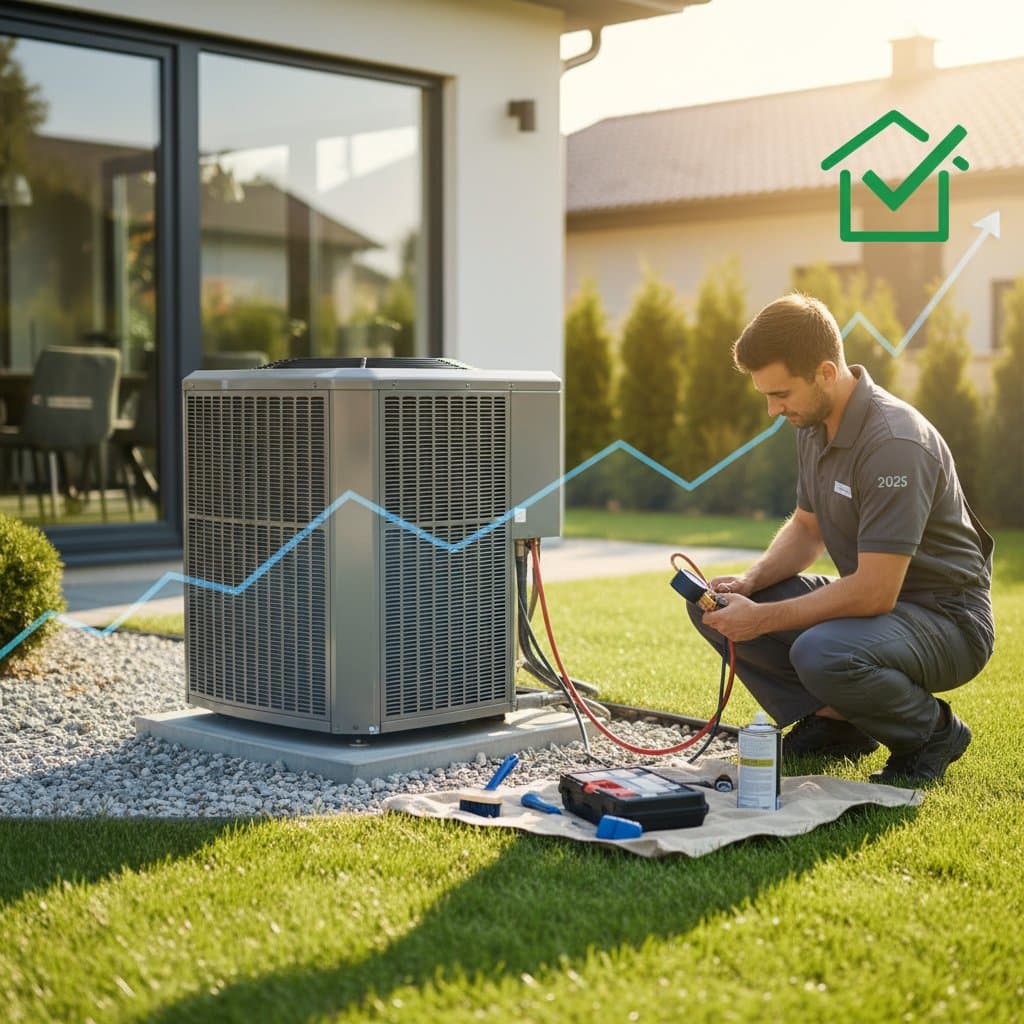Prepare Your AC for Summer: The Tune-Up That Delivers Major Savings
Summer heat arrives swiftly, and a malfunctioning air conditioner can turn homes into uncomfortable spaces. A pre-season AC tune-up addresses this risk through proactive care. This service maintains peak performance, averts unexpected failures, and prolongs equipment longevity, allowing homeowners to avoid substantial expenses on energy use and emergency fixes.
This resource outlines the elements of a thorough tune-up, associated costs, and choices between self-managed tasks and expert intervention. It provides a detailed checklist and strategies to ready your system for dependable, cost-effective operation during peak demand periods.
Components of a Professional AC Tune-Up
Expert technicians perform comprehensive evaluations of mechanical and electrical elements during a full AC tune-up. They inspect, clean, and verify functionality to promote safe, optimal performance. While procedures differ among providers, standard protocols encompass these key actions:
- Thermostat calibration: Verify precise temperature detection and seamless system signaling.
- Refrigerant level verification: Ensure levels align with factory guidelines to avoid diminished cooling or component strain.
- Coil decontamination: Eliminate accumulated dirt from evaporator and condenser surfaces to optimize thermal exchange and air circulation.
- Electrical system review: Examine connections, switches, and terminals for deterioration or oxidation.
- Drain line clearance: Remove obstructions from moisture outlets to avert flooding or microbial proliferation.
- Fan and motor assessment: Inspect for adequate lubrication, alignment, and operational integrity to support vibration-free function.
- Filter installation: Fit a fresh filter matched to unit specifications for unrestricted air passage.
- Performance evaluation: Gauge cooling capacity through temperature drops and velocity measurements to affirm effective output.
Many providers furnish a documented summary, including visuals and suggestions. Such documentation aids in monitoring condition trends and satisfies warranty stipulations from equipment makers.
Essential DIY Maintenance Tasks
Certain upkeep activities fall within homeowner capabilities, requiring no specialized equipment. These measures enhance circulation, lessen component stress, and spot emerging concerns promptly.
Replace or Clean Air Filters Regularly
Clogged filters impede air movement, compelling the unit to strain excessively. Swap out standard filters or rinse washable variants monthly in active seasons. Select options with appropriate MERV values for your indoor environment, steering clear of those that overly constrain flow.
Remove Obstructions from the Outdoor Unit
Organic matter and soil can obstruct condenser efficiency. Preserve a minimum two-foot perimeter free of foliage and litter. Prune nearby greenery, sweep away refuse, and apply a gentle water stream to dislodge surface grime.
Verify Thermostat Functionality
Activate cooling settings and adjust to a lower setpoint. The unit should engage without delay. In cases of inaction, inspect power sources or fuses prior to seeking assistance.
Maintain the Condensate Drain
Identify the indoor drain path and confirm unobstructed drainage. Introduce a vinegar solution to inhibit organic deposits.
Monitor for Abnormal Noises
Unfamiliar vibrations or scrapes indicate potential imbalances or degradation. Early intervention curbs escalation to severe malfunctions.
These routines demand minimal time yet yield substantial improvements in system dependability.
Indicators Requiring Professional Attention
Basic self-care suffices for routine oversight, yet certain symptoms demand certified expertise. Engage a specialist upon observing:
- Vents emitting uncooled air while the unit operates
- Frost accumulation on lines or coils
- Moisture discharge near the indoor assembly
- Peculiar scents, particularly acrid or solvent-like
- Erratic on-off patterns or electrical interruptions
Specialized handling applies to all electrical modifications and refrigerant manipulations. Unqualified attempts risk harm and warranty invalidation.
How Routine Tune-Ups Prolong Equipment Durability
Consistent servicing alleviates pressure on vital parts. Pristine coils mitigate thermal overload, proper refrigerant sustains balanced forces, and greased mechanisms operate fluidly. This synergy shields the compressor, the system's core, from accelerated deterioration.
Data from industry associations indicate that annually serviced units endure up to a decade beyond those lacking care. Such extension defers full replacement outlays, frequently exceeding thousands of dollars. Moreover, adherence to maintenance protocols upholds warranty validity, often contingent on verified professional records.
Comprehensive AC Tune-Up Checklist
Utilize this inventory prior to professional visits or independent efforts to cover all bases.
Indoor Component Actions:
- Install or refresh air filters
- Examine evaporator surfaces for residue
- Flush the drainage conduit
- Assess vent circulation strength
Outdoor Component Actions:
- Eliminate surrounding overgrowth and waste
- Wash condenser fins
- Scan blower elements for impairments
- Ensure stable mounting foundation
Overall System Verification:
- Trial thermostat responsiveness
- Detect atypical sounds
- Observe startup and shutdown sequences
- Note any evident degradation or rust
Documenting these observations facilitates ongoing assessment and informs expert consultations.
Transitioning from Tune-Up to Necessary Repairs
Inspections occasionally uncover defects demanding intervention beyond standard care. Failures in major elements like compressors, coils, or drives can inflate expenses rapidly. Homeowners must then weigh repair feasibility against system renewal.
A benchmark suggests opting for replacement when fix costs surpass fifty percent of a new installation's price, particularly for aging units. Experts offer comparative estimates to guide decisions.
Strategies to Avoid Ongoing Problems
Post-tune-up efficiency persists with vigilant habits. Sustain filter freshness, preserve coil cleanliness, and arrange interim reviews in challenging climates. Refrain from extreme temperature reductions, which provoke undue operational cycles.
In regions prone to voltage instability, equip the system with protective devices. These safeguards avert harm to sensitive electronics and core mechanisms.
Expert Recommendations for Optimal Performance
Select technicians holding current certifications and ample experience with your unit type. Inquire about service guarantees and post-visit support. For multi-unit homes, bundle appointments to economize.
Integrate smart monitoring tools for real-time alerts on filter status or efficiency dips. These enhancements complement traditional maintenance, ensuring sustained savings and comfort.





